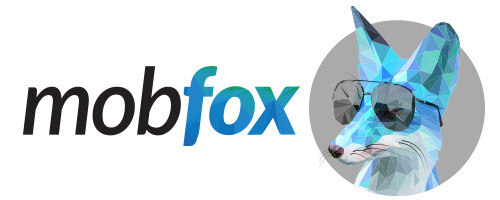Drop the FUD, it is time to move forward with the three C’s

Reflecting on the fantastic discussions and learnings from Gamesforum’s inaugural Laser Series in London (yeah! to live events again, finally), I believe the mobile games industry has been in a period of FUD – Fear, Uncertainty and Doubt, but instead think we need to be flying the flag for Calm, Confidence and Conviction.
FUD was originally coined in the days of IBM, Microsoft, and PCs, and referred to strategic negative marketing or propaganda that was often deployed by the incumbents of the industry. The purpose was to keep customers from shifting their allegiance to smaller, nimbler competitors by introducing anxiety and inertia into their decision processes.
Right now it feels like the mobile games industry is facing its own moment of FUD, and while it’s of course not the result of a strategic campaign (although Epic may disagree.. ), the outcome could be the same if the industry doesn’t move forward confidently.
Fear
The release of iOS 14.5 and IDFA deprecation has already hit the bottom line of any developers and publishers that rely on ad monetization, with low LAT opt-in rates resulting in decreased CPMs and increased difficulty to properly target and attribute campaigns on iOS.
Uncertainty
iOS 14.5 was only the first “shot across the bows”of the industry’s platforms. The next salvos will include the impact of iOS 15 and Google FLoC, and whether new solutions such as Unified OpenID 2.0, as well as better probabilistic attribution, will solve the challenges of addressable and measurable advertising within aprivacy context.
Advertisers have become unsure of how to show “the right ad to the right player at the right time”, when as Abishek Sen from Numereight neatly stated, “iOS14.5 has finally broken the link between targeting and identity.”
Doubt
In discussions on and off stage a common theme centered around “are Apple and Google on our side, or looking to seize even more of the value from the ecosystem?”.
While the answer is never black-and-white, the platforms do have to balance the needs of developers (monetization), players (privacy) and advertisers (targeting and attribution) along with their own bottom lines.
A positive paradigm: CCC
In the spirit of creative destruction, I continue to believe that these changes to our industry give us a remarkable opportunity to rethink how – through the medium of mobile gaming – we can connect advertisers with their intended audiences, in ways that are meaningful and relevant.
Instead of FUD, we must welcome the era of the three Cs: Calm, Confidence, and Conviction.
Calm
I’ve been pioneering tech in mobile games long enough to remember when mobile games meant SMS rock/paper/scissors-style games. These gave way to Java/J2ME games, which then led to native games sold first by mobile network operators’ walled gardens (remember those?), then the app stores and the emergence of the free-to-play model.
Fundamental shifts enrich the mobile gaming experience and the industry has come out healthier and orders of magnitude larger. Hysteria or obsession doesn’t not help and a calm approach to change is required.
Confidence
On stage at Gamesforum Adam Pattison from TargetSpot said “brand advertisers don’t need IDFAs to target”. And of course there are lots of new ways being explored to target with behavioural and contextual signals. Sophisticated advertisers have moved from pure demographic targeting to building campaigns around personas and motivations.
Conviction
The loss of device identifiers is the ultimate incentive for developers to build deeper relationships with their audiences. Jeremy Stein (Head of Studio, SYBO) has said previously, “People don’t hate ads, they hate bad content.”
Engaged gamers are happy to share more information about themselves either directly or indirectly, when the quid pro quo is a better, more personalized game experience.
Whether through internalizing and optimizing cross-promotion capabilities (part of the panel featuring Dilpesh Parmar, Aequus and David Philippson), integrating new non-intrusive ad formats such as audio ads or AdInMo’s own InGamePlay ads, I think we can all celebrate that the FUD of 2021 has created an environment where proactive and forward-thinking game developers and publishers can find better ways to engage their audiences more profitably.
By Kristan Rivers, CEO of AdInMo
This article was originally published by Gamesforum on the 6th October 2021
More…
Team AdInMo’s predictions for 2021
It’s that time of year when it’s normal to reflect, wrap-up the year and make the odd prediction (read: wild stab in the dark) for the next year. 2020 has of course been an exceptional year globally. We all need something to look forward to so we’ve skipped the wrap...
It’s going to be the best Christmas ever, for in-game advertising
The ‘golden quarter’ is usually exemplified by retailers and luxury brands throwing huge budgets at extravagant festive ad campaigns. But amid soaring Covid cases, national lockdowns and travel restrictions, rising unemployment and uncertainty over Brexit, advertisers...
AdInMo extends supply-side network with Mobfox integration
AdInMo integration opens new channel for Mobfox clients to target mobile gaming AdInMo, the mobile InGamePlay Brands Ads platform, has completed an integration with global programmatic advertising SSP, Mobfox, extending AdInMo’s supply-side network and providing...




